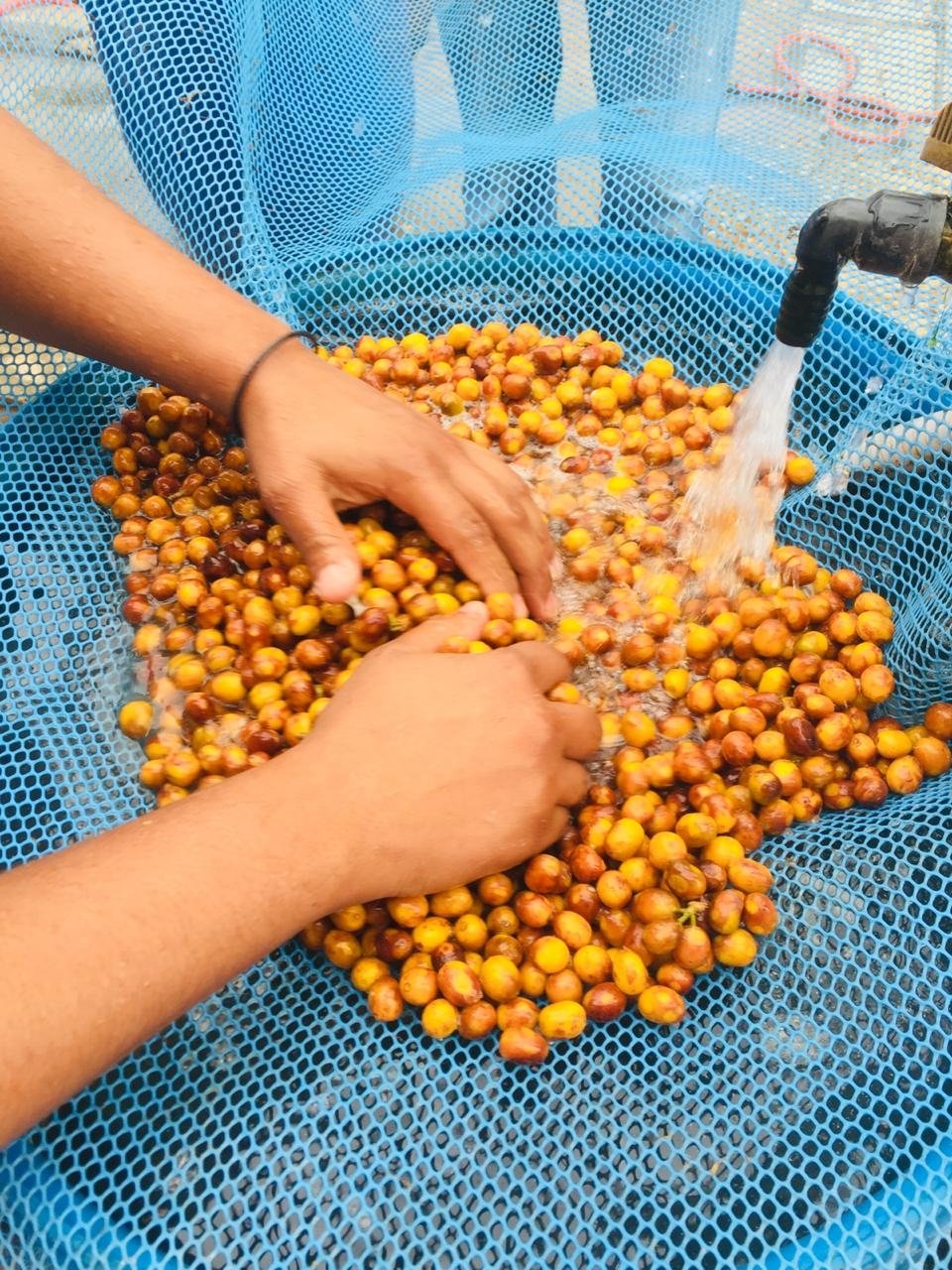Before the grains reach the form we know, they have to go through a difficult journey, from harvesting to roasting. But what is in between? Countless steps and procedures without which coffee would not have the right taste, smell and quite possibly would not be suitable for roasting and consumption at all. The main goal of each processing method is therefore to clean the grains, remove the damaged crop and then dry them. The most commonly used methods of coffee processing, thanks to which we obtain the highest quality and tastiest beans, are three. In previous articles, we introduced you metodu honey a dry method. We will now introduce you to the washed method.

Advantages and disadvantages of the washed coffee processing method
This method is the most widespread method of coffee processing in the world. It is possible to come across multiple names such as: washed, washed, washed or fully washed. However, all terms refer to the same process that is used by approximately 60% of coffee producers. It is considered to be the cleanest and thanks to this procedure farmers will also achieve the most accurate and desirable taste profile of the resulting grains. The washed method is really reliable, all harvested grains are prepared for roasting in the same way - with the same taste potential. The delicious tones we feel in our favorite espresso are therefore not only affected by the climate of the place or roasting. Processing coffee with this popular method develops acidity in the taste, which gives the coffee the real touch we are used to. The dry or honey method, on the other hand, develops fruit tones and a larger body.
Farms in Africa are currently being processed by a washed method. Coffee needs enough moisture to develop the fruit properly. So coffee trees are always grown in a place where there is enough moisture. These are usually high places where there is plenty of water. Just to avoid mystification, somewhere they have already learned to collect and recycle residual water by using it for other activities.

Washed method - procedure
It all starts with the collection. The coffee tree bush produces so-called coffee cherries. Visually, they look almost identical to our Czech ones, but even so, there is one fundamental difference - coffee cherries are harvested precisely because of the grains that ripen in their flesh. There can be one (pearl), two or even three grains in each cherry. The moment the fruits of the coffee tree ripen, the harvest begins. Farmers will comb all the crops, and at that point the traditional processing of coffee and its preparation for roasters can begin.
After harvesting, the cherries are moved for immediate sorting and then for three-phase pulp removal. First, the red fruits are soaked in water, where it is revealed that they are damaged or immature, as defective cherries are lifted by the water. These will be removed so that only healthy and high-quality ones can be worked on. Sometimes they are sorted this way several times. Then the fruits travel to mechanical machines, where the coffee beans are finally gradually revealed by cleaning them from a larger amount of pulp and skin of the fruit using a so-called grinder. The remaining cherry remnants are separated from the grains by subsequent fermentation. In the second step, the grains with the remains of the cherries are placed in tanks, where they rest and ferment for several tens of hours, so that they can be cleaned more easily. Then the so-called washing takes place. The beans are rinsed with water to completely remove any remaining coffee cherry or its pulp. Now there is only one thing left - dry the grains to the required humidity (10 - 12%). To transport coffee to roasters, it needs to be perfectly dry. This prevents the formation of mold and, above all, the grain stabilizes its structure and taste. The result of this whole process is therefore a cleaned grain in parchment, which is stripped of all skin and pulp from the fruit. The final stage is peeling, in which the dried grain must be stripped of parchment.
The sun itself is usually used for drying. The washed grains are transferred to concrete terraces or to so-called African beds, where they dry even for several weeks. If there is a shortage of sunbeams, mechanical dryers are also used, which can also handle moisture reliably.
Do you want to taste coffee processed by this method?
We can recommend you for example Kenya AA Kiri. Espresso from these African grains has a rich taste reminiscent of berries and perfectly developed acidity. You can achieve the maximum experience from this coffee by preparing it in a V60 filter or aeropress.




Share:
Coffee processing methods II. - Dry
Basic techniques of latte art